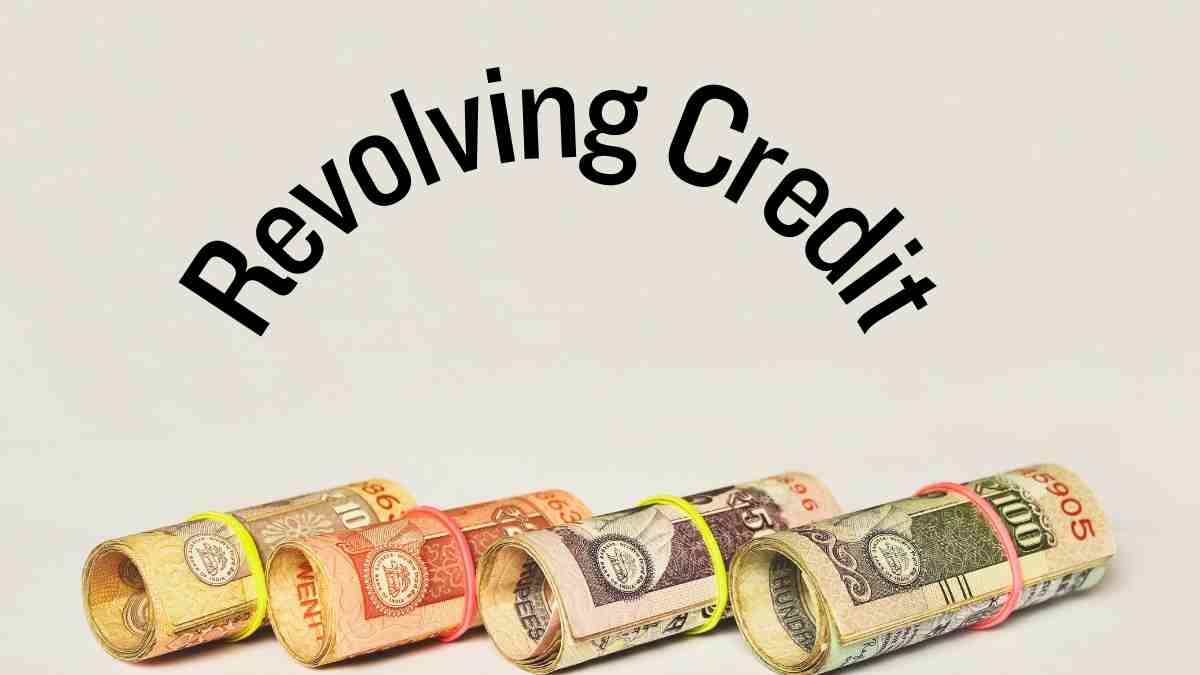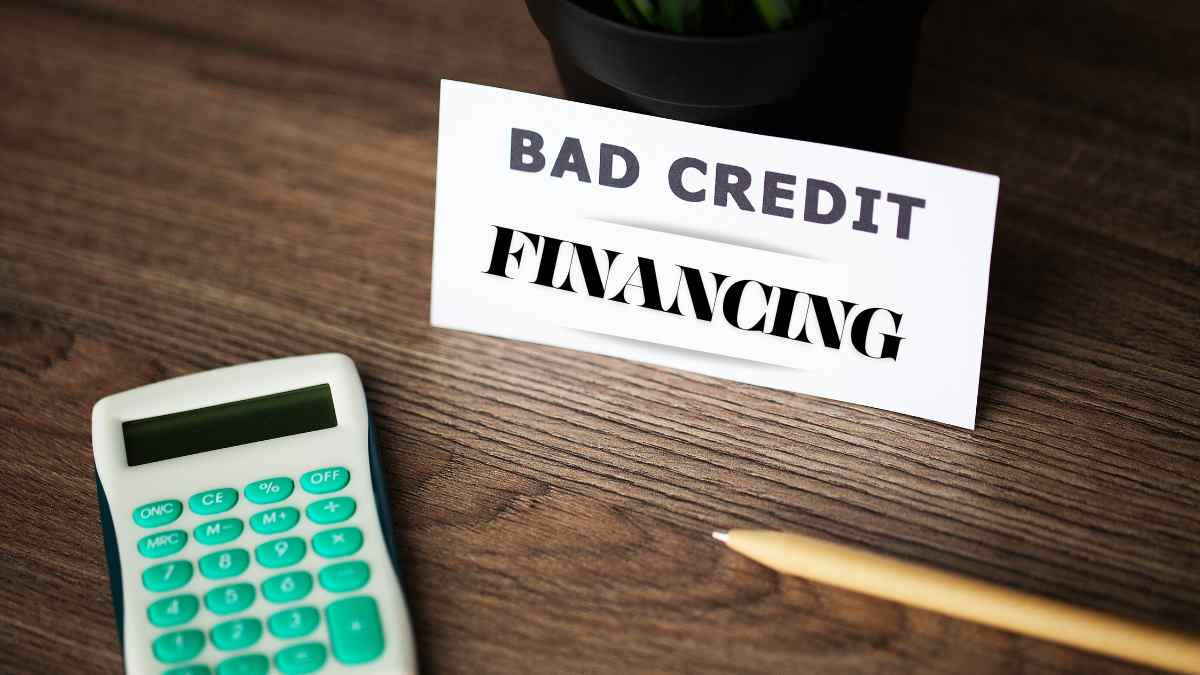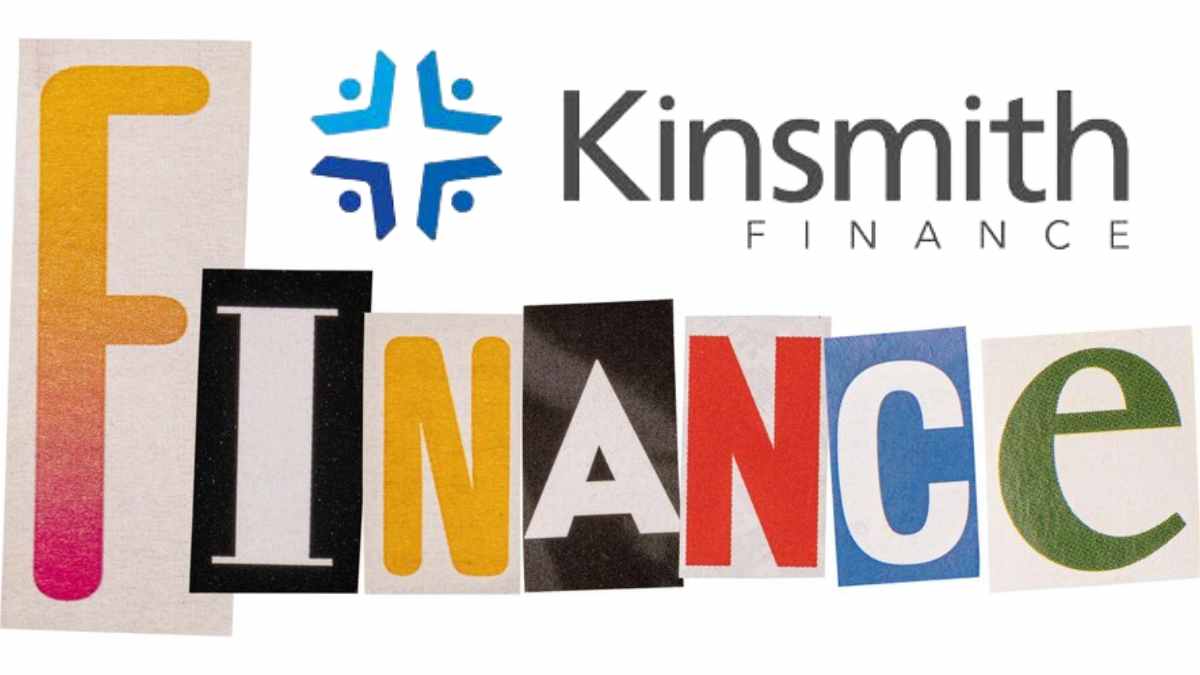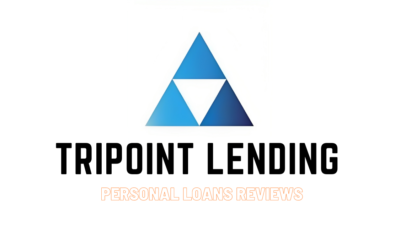Finance
Revolving Credit: Understanding the Flexible Financial Tool

Welcome to the world of revolving credit, where financial flexibility meets your ever-changing needs! If you’ve ever found yourself in a situation where you needed quick access to funds or wanted the convenience of making purchases without depleting your savings, then revolving credit is here to save the day. This versatile financial tool allows you to borrow money up to a predetermined limit and repay it at your own pace, giving you the freedom and control over your finances like never before. Whether you’re looking for ways to finance large expenses or simply want an extra safety net for unexpected emergencies, understanding how revolving credit works can be a game-changer in achieving your financial goals. So grab a coffee (or tea!) and let’s dive into this fascinating topic together!
What is Revolving Credit
Revolving credit is a financial tool that offers flexibility and convenience to borrowers. Unlike traditional loans, where you receive a lump sum of money upfront and make fixed monthly payments, revolving credit allows you to access a predetermined credit limit whenever you need it. It’s like having a revolving door of funds available for your use!
Understanding Revolving Credit
With revolving credit, you have the freedom to borrow as much or as little as you need within your approved limit. Once you start using the credit, your balance increases, and as you make payments towards it, your available credit replenishes. This cycle continues indefinitely until either the lender or borrower decides to close the account.
This type of financing comes in various forms such as credit cards, lines of credit (LOC), and home equity lines of credit (HELOC). Each has its own unique features tailored to different borrowing needs. Credit cards are widely popular due to their ease of use and accessibility – simply swipe or tap for instant payment! Lines of credit offer more flexibility with higher limits suitable for ongoing expenses like home renovations or education costs. And if you’re a homeowner looking to tap into your property’s equity for major expenditures like remodeling projects or debt consolidation, HELOCs can be an excellent option.
While revolving credits provide many advantages – such as convenience, quick access to funds without reapplying each time, lower interest rates compared to other types of loans – they also come with some potential drawbacks worth considering. For one thing, it can be tempting to overspend when there is no set repayment schedule in place. Additionally, if not managed responsibly, revolving credits may negatively impact your overall financial health by increasing debt burdens and potentially damaging your credit score.
To effectively manage revolving credits and reap maximum benefits from them requires discipline and strategic planning on the borrower’s part. Regularly monitoring spending habits is crucial; keeping track will help avoid unnecessary debts piling up while taking advantage of rewards programs or cashback offers associated with credit cards. Making timely payments is equally important
Types of Revolving Credit
Credit Card
When it comes to revolving credit, there are a few different options available. One common type is a credit card, which allows you to make purchases up to your credit limit and then repay the balance over time. Another option is a line of credit, which functions similarly but typically has higher limits and may be secured by collateral such as your home or car.
Overdraft Protection
Some financial institutions also offer overdraft protection as a form of revolving credit. This allows you to overdraw your checking account up to a certain limit, with the understanding that you will repay the negative balance in the future.
Retail Store Card
Another typet is a retail store card. These cards are often offered by specific retailers and can only be used at their stores or affiliated locations. They usually come with special perks like discounts or rewards programs.
Some individuals may qualify for personal lines of credit from banks or online lenders. These can be used for various purposes such as debt consolidation, home improvements, or unexpected expenses. Having access to multiple types of revolving credit can provide flexibility and convenience in managing your finances effectively.
Benefits of Revolving Credit
When it comes to managing your finances, having access to revolving credit can provide a range of benefits. One major advantage is the flexibility it offers. Unlike installment loans where you receive a lump sum and make fixed monthly payments, revolving credit allows you to borrow and repay funds as needed.
Freedom to Use Funds
With revolving credit, you have the freedom to use funds up to your approved limit whenever necessary. This can be especially helpful during emergencies or unexpected expenses. Instead of scrambling for cash or relying on high-interest payday loans, you can simply tap into your revolving credit line.
Help to Positive Credit History
Another benefit of revolving credit is that it helps build and maintain a positive credit history. By consistently making timely payments and keeping your balances low, lenders see you as responsible borrower. This can boost your credit score over time, making it easier for you to qualify for future loans with favorable terms.
Manage Debt Effectively
Additionally, using revolving credit responsibly demonstrates financial discipline and shows lenders that you are able to manage debt effectively. This can open doors for better interest rates on mortgages or car loans in the future.
Peace of Mind
Furthermore, having access to a line of revolving credit provides peace of mind knowing that there is always a safety net available when unexpected expenses arise. It serves as an additional layer of financial security in case of emergencies or unforeseen circumstances.
In conclusion Revolving credit offers numerous benefits including flexibility in borrowing and repaying funds, building good credit history, demonstrating financial responsibility, and providing peace of mind in times of need. However, it’s important to use this tool responsibly by staying within budget limits and making timely payments to avoid falling into excessive debt. By understanding how best to utilize this flexible financial tool, individuals can take full advantage while maintaining their overall financial well-being
How to Use Revolving Credit Responsibly
Using revolving credit responsibly is essential for maintaining a healthy financial life. Here are some tips on how to do it:
- Understand your limits: Before using your revolving credit, make sure you know the maximum amount you can borrow and stick to it. Avoid overspending and stay within your means.
- Pay on time: Timely payments are crucial when it comes to revolving credit. Set reminders or automate payments to ensure you never miss a due date. Late payments not only incur fees but also negatively impact your credit score.
- Keep balances low: It’s best to keep your revolving credit balances as low as possible, ideally below 30% of your available limit. This demonstrates responsible borrowing behavior and improves your credit utilization ratio.
- Avoid unnecessary debt: While having access to revolving credit can be convenient, resist the temptation to use it for frivolous purchases or impulse buys that could lead to unnecessary debt.
- Regularly review statements: Stay vigilant by reviewing monthly statements thoroughly for any errors or fraudulent activity. Reporting discrepancies promptly will protect you from potential financial harm.
- Use multiple accounts wisely: If you have multiple revolving accounts, manage them carefully by diversifying usage across different cards while still adhering to responsible borrowing practices.
By following these guidelines, you can harness the benefits of revolving credit without falling into the trap of excessive debt or damaging your financial well-being
Managing Your Revolving Credit for Maximum Benefits
When it comes to managing your revolving credit, there are a few key strategies that can help you make the most of this flexible financial tool.
Organization and Tracking
First and foremost, it’s important to stay organized and keep track of your spending. Set a budget for yourself and stick to it, making sure to pay off your balance in full each month.
Credit Utilization Ratio
Another tip is to be mindful of your credit utilization ratio. This is the amount of available credit you’re using compared to the total amount of credit you have. Keeping this ratio low can positively impact your credit score and demonstrate responsible borrowing habits.
Review you Statement
Regularly reviewing your statements is also crucial in managing revolving credit effectively. Look out for any unauthorized charges or errors on your account and report them immediately. By staying vigilant, you can protect yourself from potential fraud and maintain control over your finances.
Automating Payments
Consider automating payments for convenience and peace of mind. Setting up automatic payments ensures that you never miss a due date, helping you avoid late fees or penalties that could negatively affect your credit score.
By implementing these strategies and being proactive in managing your revolving credit accounts, you can maximize the benefits they offer while maintaining control over your financial health. Stay on top of things by staying organized, monitoring usage closely, reviewing statements regularly, and automating payments when possible – these simple steps will go a long way in ensuring that revolving credit works in YOUR favor!
Tips for Building and Maintaining Good Credit with Revolving Accounts
Building and maintaining good credit with revolving accounts is crucial for anyone looking to establish a solid financial foundation. Here are some practical tips to help you navigate the world of revolving credit and make the most of it.
Responsible Credit Usage
It’s important to understand that responsible credit usage is key. Make sure you pay your bills on time, as late payments can have a negative impact on your credit score. Additionally, avoid maxing out your credit cards or utilizing too much of your available credit. The rule of thumb is to keep your credit utilization ratio below 30%.
Diversify your Account
Another tip is to diversify your revolving accounts. Having a mix of different types of accounts like credit cards, lines of credits, and retail store cards can demonstrate responsible borrowing behavior and improve your overall credit profile.
Regularly Account Monitoring
Regularly monitoring your accounts is also essential in building good credit with revolving accounts. Stay vigilant by reviewing your statements regularly for any errors or unauthorized charges. If you notice anything suspicious, report it immediately.
Be patient
Be patient when building good credit with revolving accounts. It takes time and consistent positive behavior to see significant improvements in your score. Remember that establishing good habits now will benefit you in the long run.
By following these tips, you’ll be well on your way to building and maintaining good credit with revolving accounts!
Conclusion
In the world of personal finance, revolving credit can be a powerful tool for managing your finances and building your credit score. Whether you’re using a credit card or a line of credit, it’s important to understand how revolving credit works and how to use it responsibly. Revolving credit offers flexibility and convenience that other types of loans may not provide. With revolving credit, you have access to funds whenever you need them, up to your approved limit. You can borrow, repay, and borrow again as needed, making it an ideal option for covering unexpected expenses or managing cash flow.
However, with this flexibility comes responsibility. It’s crucial to manage your revolving credit accounts wisely in order to avoid excessive debt and maintain a healthy financial outlook. To effectively manage your revolving credit accounts, start by setting a budget and sticking to it. Only charge what you can afford to pay off in full each month. This will help you avoid accruing interest charges and falling into the cycle of revolving debt.
FAQs
Can revolving credit affect my credit score?
Yes, credit ratings are favorably affected by on-time payments on revolving credit and negatively affected by late payments.
What distinguishes revolving credit from installment credit?
There is a difference between installment credit, which requires fixed payments over a certain length of time, and revolving credit, which offers more leeway in borrowing and repaying.
How can I manage revolving credit responsibly?
As a responsible manager, you should keep an eye on your credit balance, pay your bills on time, and borrow only what you can afford.
Is revolving credit similar to traditional loans?
With it , you may borrow, pay it back, and borrow more money as long as you stay under your credit limit, unlike with fixed-term loans.
What factors determine the approval of a revolving credit account?
An individual’s ability to open and maintain a revolving credit account is conditional on a number of factors, including their income, obligations, and credit history.
Finance
https://thetechijournal.com/onyx-shower/

In House Financing Cars! Are you dreaming of cruising around town in your dream car, but struggling to secure financing? In-house financing could be the solution you’ve been searching for! From understanding how it works to navigating the negotiation process, this blog will guide you through everything you need to know before buying a car with in-house financing. Buckle up and let’s dive into the world of in-house car financing together!
In House Financing Cars: Explanation of In House Financing
In house financing cars is a financing option offered directly by car dealerships, allowing customers to secure a loan without going through a third-party lender. This type of financing can be appealing to those with less-than-perfect credit or limited financial history.
So, what does in-house financing cars mean at car dealerships? Essentially, it means that the dealership acts as the lender, providing you with the funds needed to purchase your vehicle directly.
How does in-house car financing work? Well, instead of applying for a loan from a bank or credit union, you’ll submit your application and financial information directly to the dealership. The dealership will then review your application and determine the terms of your loan based on their own criteria.
Not all car lots offer in-house financing, so it’s essential to do some research and find dealerships that provide this option if you’re interested. Keep in mind that each dealership may have different requirements and terms for their in-house financing options.
What is in House Financing for Cars
In house financing for cars is when the dealership provides the loan directly to the buyer, cutting out the need for a third-party financial institution. This option can be appealing to those who may have difficulty obtaining traditional financing due to credit issues or lack of credit history. With in house financing, dealerships make their own lending decisions based on factors such as income and employment stability.
By offering in house financing, car dealerships aim to attract a wider range of customers and increase sales by providing more accessible options for purchasing a vehicle. This type of financing can streamline the buying process and offer convenience for buyers who prefer dealing directly with the dealership for their loan needs.
Understanding what in house financing entails is essential before considering this option when purchasing a car. It’s important to weigh the pros and cons carefully to determine if it’s the right choice for your unique financial situation.
What Does in House Financing Mean at Car Dealerships
In the world of car shopping, in-house financing at dealerships can be a game-changer. But what exactly does it mean? Well, when a dealership offers in-house financing, it means they are willing to finance your car purchase themselves instead of going through a third-party lender.
This can be beneficial for those who may not qualify for traditional bank loans due to credit challenges or other financial reasons. In-house financing allows the dealership to work directly with customers to find a payment plan that fits their budget and needs.
Essentially, it’s like one-stop shopping – you pick out your dream car and secure financing all under one roof. It gives buyers more flexibility and convenience in the purchasing process. Plus, dealerships offering in-house financing often have more lenient approval criteria compared to banks or credit unions.
How Does In House Financing Cars Work
When it comes to in house car financing, the process is pretty straightforward. Instead of going through a third-party lender like a bank or credit union, the dealership itself provides the financing for your vehicle purchase. This means you’ll work directly with the dealership’s finance department to secure a loan and make payments.
Typically, you’ll need to fill out an application detailing your financial information and credit history. The dealership will then review your application and determine what loan terms they can offer you based on their internal criteria. Once approved, you’ll sign a financing agreement outlining the terms of the loan, including interest rate, monthly payments, and repayment schedule.
It’s important to note that in house financing may come with higher interest rates compared to traditional lenders due to potentially increased risks for the dealership. However, it can be a convenient option for those with less-than-perfect credit or who prefer a more streamlined purchasing process at the dealership.
What Car Lots Do in House Financing
When it comes to in house financing for cars, not all car lots offer this option. Car lots that provide in house financing typically have their own finance department or work directly with financial institutions to facilitate loans for customers who may not qualify through traditional lenders.
These specialized car dealerships often cater to individuals with less than perfect credit scores or those who have limited credit history. By offering in house financing, these car lots can help a wider range of customers get behind the wheel of a vehicle they need.
Customers looking for in house financing options should seek out dealerships that explicitly advertise this service. These establishments will have knowledgeable staff who can guide buyers through the application process and explain the terms and conditions of the loan agreement.
Choosing a car lot that offers in house financing can be beneficial for those facing credit challenges or seeking a more streamlined approval process when purchasing a vehicle.
How to Qualify forIn House Financing Cars
To qualify for In House Financing Cars when buying a car, there are a few key factors to consider. First and foremost, your credit score plays a significant role in determining your eligibility for this type of financing. Dealerships offering in-house financing may be more flexible with credit scores compared to traditional lenders.
Additionally, you will need to provide proof of income to demonstrate your ability to make regular payments on the loan. This can include pay stubs or bank statements. Some dealerships may also require a down payment or trade-in vehicle as part of the qualification process.
It’s important to have a clear understanding of your budget and how much you can afford to spend on monthly payments before applying for in-house financing. Being prepared with all necessary documentation and information will help streamline the approval process and increase your chances of qualifying for this type of financing option.
Tips for Negotiating with Dealerships
When it comes to negotiating with dealerships for in-house financing cars, preparation is key. Start by researching the market value of the car you’re interested in and set a budget beforehand.
Be confident but respectful during negotiations. Remember that both parties are looking for a mutually beneficial deal. Don’t be afraid to walk away if the terms don’t meet your expectations.
If possible, try to negotiate based on the total cost of the vehicle rather than monthly payments. This can give you a clearer picture of what you’re actually paying in the long run.
Ask about any incentives or promotions that might be available to help lower the overall price. Dealerships may have special offers or discounts that could work in your favor.
Always read and understand all documents before signing anything. Make sure there are no hidden fees or clauses that could come back to bite you later on.
Advantages and Disadvantages of In House Financing Cars
When it comes to in house financing cars, there are both advantages and disadvantages to consider. One of the main advantages is that it can be easier to qualify for compared to traditional bank loans. This can be beneficial for individuals with less-than-perfect credit scores or those who may have difficulty getting approved elsewhere.
Additionally, in house financing often offers a more streamlined process, allowing you to complete your purchase quickly without having to wait for external approvals. Moreover, some dealerships may offer flexible payment terms tailored to your financial situation, making it easier to manage your payments.
On the flip side, one of the main disadvantages of in house financing is that it typically comes with higher interest rates than traditional loans. This means you could end up paying more over time compared to securing a loan through a bank or credit union.
Furthermore, some in house financing arrangements may have stricter repayment terms and consequences if you miss payments, potentially putting your vehicle at risk if you fall behind on payments. It’s essential to carefully review all terms and conditions before committing to an in house financing agreement.
Understanding Interest Rates and Payment Terms
Understanding the interest rates and payment terms when opting for in-house financing is crucial. Interest rates can greatly impact the total cost of your vehicle over time. The lower the rate, the less you’ll pay in the long run. Payment terms refer to how long you have to repay your loan and can determine your monthly payments.
Interest rates on in-house financing cars tend to be higher than traditional loans since they are often provided without thorough credit checks. This means you may end up paying more over time. Make sure you fully understand what interest rate you’re being offered and how it compares to other options available.
Payment terms typically range from 12-72 months, with longer terms resulting in lower monthly payments but higher overall costs due to accruing interest. It’s essential to weigh the pros and cons of longer versus shorter payment terms based on your financial situation.
Before committing to any deal, make sure to carefully review all details regarding interest rates and payment terms so that there are no surprises down the road. Understanding these factors will help you make an informed decision when considering in-house financing for your next car purchase.
In House Financing Cars: Potential Risks and Precautions
When consideringIn house financing cars for your next car purchase, it’s important to be aware of the potential risks and take necessary precautions. One risk is that some dealerships may charge higher interest rates compared to traditional lenders, leading to increased overall costs. Another risk is the possibility of hidden fees or undisclosed terms that could catch you off guard.
To avoid these risks, make sure to carefully review all loan documents before signing anything. Ask questions about any unclear terms or conditions and seek clarification if needed. It’s also advisable to research the dealership’s reputation and read reviews from other customers to gauge their trustworthiness.
Additionally, consider getting pre-approved for a loan from a bank or credit union before visiting dealerships offering in-house financing. This way, you can compare offers and ensure you’re getting the best deal possible while protecting yourself from potentially predatory lending practices.
Alternatives to In House Financing Cars
If you’re considering purchasing a car but want to explore alternatives to in-house financing, there are several options available. One alternative is securing a traditional auto loan from a bank or credit union. These institutions often offer competitive interest rates and flexible payment terms.
Another option is exploring lease-to-own programs, where you can lease a vehicle with the option to buy it at the end of the term. This can be beneficial for those looking for lower monthly payments or who may not qualify for a traditional loan.
You could also consider saving up and paying cash for a pre-owned vehicle. While this may require patience and discipline, it eliminates the need for financing altogether.
Some dealerships offer manufacturer incentives such as 0% APR financing on select models. Be sure to research and compare all your options before making a decision on how to finance your next car purchase.
Conclusion
As you wrap up your journey into the world of in-house financing cars, remember that knowledge is power. Understanding how in-house financing works, qualifying for it, negotiating effectively with dealerships, and being aware of the advantages and disadvantages are all crucial aspects to consider before making a decision.
Interest rates and payment terms play a significant role in determining the overall cost of your vehicle purchase through in-house financing. Being informed about these factors can help you make a more financially sound choice.
While there are risks involved with in-house financing cars, taking precautions such as thoroughly reading and understanding the terms of the agreement can help mitigate potential pitfalls.
Exploring alternative In House Financing Cars options can also provide you with more flexibility and potentially better terms suited to your financial situation.
In the end, arming yourself with knowledge and being proactive in your approach will empower you to make an informed decision when it comes to buying a car through in-house financing.
FAQs: In House Financing Cars
What credit score do I need to qualify for in-house financing?
Usually, in-house financing is more lenient than traditional bank loans, so you may still qualify with a lower credit score. However, the specific requirements can vary between dealerships.
Can I negotiate the terms of an in-house financing agreement?
Yes, negotiating is always an option when it comes to car financing. Don’t be afraid to discuss interest rates, down payments, and payment terms with the dealership.
Are there any hidden fees associated with in-house financing?
It’s essential to carefully review the contract before signing to understand all fees involved. Ask about any potential additional charges or penalties upfront.
Is in-house financing only available for new cars?
In House Financing Cars can be available for both new and used cars at some dealerships. It’s best to inquire directly with the dealer about their options.
What happens if I default on my in-house financing payments?
If you miss payments or default on your agreement, the dealership may repossess your vehicle as collateral. It’s crucial to communicate any financial difficulties early on and potentially renegotiate payment terms if needed.
Finance
Bad Credit Financing for ATV: How to Get Approved Despite Your Credit Score

Bad Credit Financing for ATV! Looking to hit the trails on a brand-new ATV but worried about your less-than-perfect credit score holding you back? Don’t let bad credit put the brakes on your off-road adventures! In this guide, we will explore how you can secure financing for an ATV even with a rocky credit history. Get ready to rev up your engines and discover how you can make your ATV dreams a reality, no matter what your credit score may be!
Bad Credit Financing for ATV: Understanding Bad Credit
When it comes to financing, your credit score plays a crucial role in determining your financial health. Bad credit typically refers to a low credit score resulting from missed payments, high debt levels, or other negative factors. Your credit score is a numeric representation of your creditworthiness and how likely you are to repay borrowed funds on time.
Lenders use this information to assess the risk of lending money to you. A lower credit score signals higher risk for lenders, making it more challenging to secure loans or favorable interest rates. Understanding the factors that contribute to bad credit can help you take steps towards improving your financial situation and increasing your chances of approval for ATV financing despite past setbacks.
It’s important to be aware of where you stand financially and take proactive measures to address any issues dragging down your credit score. By gaining insight into how bad credit impacts your ability to secure financing, you can work towards rebuilding your financial reputation and achieving your goals in the long run.
Bad Credit Financing for ATV: The Impact of Bad Credit on ATV Financing
Having bad credit can significantly impact your ability to secure financing for an ATV. Lenders use your credit score as a measure of risk, determining whether you are likely to make timely payments. With bad credit, lenders may see you as a higher risk borrower and may offer less favorable terms such as higher interest rates or larger down payments.
Additionally, having bad credit could limit the number of lenders willing to work with you, making it more challenging to find suitable financing options for your ATV purchase. Some lenders may even outright deny your application based on your credit history alone.
It’s important to understand how bad credit affects ATV financing so that you can be prepared for potential obstacles in the loan approval process. By proactively addressing any issues related to your credit score, you can improve your chances of securing financing despite past financial setbacks.
Bad Credit Financing for ATV: Options for Bad Credit Financing
If you’re in the market for an ATV but have bad credit, don’t lose hope just yet. There are options available to help you secure financing despite your credit score.
One option is seeking out lenders who specialize in bad credit financing. These lenders understand that not everyone has a perfect credit history and are willing to work with individuals to find a solution that fits their needs.
Another option is considering a co-signer for your loan. Having someone with good credit co-sign the loan can increase your chances of approval and potentially lower your interest rate.
Additionally, exploring in-house financing offered by some ATV dealerships could be beneficial. These programs may have more lenient requirements compared to traditional lenders.
Remember, it’s essential to research and compare different financing options to find the best fit for your situation.
Tips for Improving Your Chances of Approval
Looking to improve your chances of getting approved for ATV financing despite having bad credit? Here are some tips to help you increase your odds:
First, work on improving your credit score by paying off any outstanding debts and making timely payments on your existing loans. This will show lenders that you are actively trying to manage your finances responsibly.
Consider saving up for a larger down payment. A substantial down payment can demonstrate to the lender that you are committed to the purchase and can reduce the overall loan amount, making it less risky for them.
Shop around and compare offers from different lenders. Each lender has their own criteria for approval, so exploring multiple options can help you find one that is more willing to work with individuals with bad credit.
Consider getting a co-signer with good credit. Having someone co-sign the loan with you can significantly boost your chances of approval as they are essentially vouching for your ability to repay the loan.
Be prepared to negotiate terms with potential lenders. Don’t be afraid to discuss your situation openly and see if there is room for flexibility in terms such as interest rates or repayment schedules.
Factors to Consider When Choosing a Lender
When looking for a lender to finance your ATV despite having bad credit, there are several factors you should consider.
First and foremost, make sure to research different lenders and compare their terms and interest rates. Look for lenders who specialize in bad credit financing as they may be more understanding of your situation.
Consider the loan terms offered by each lender – pay attention to the repayment period, monthly payments, and any additional fees or charges that may apply.
It’s also important to check if the lender reports payment activity to credit bureaus. Timely payments on your ATV loan can help rebuild your credit over time.
Don’t forget to read reviews or ask for recommendations from others who have used similar financing options. Customer feedback can provide valuable insights into a lender’s reputation and customer service.
Choose a lender that not only offers reasonable terms but also provides excellent customer support throughout the loan process.
Alternatives to Traditional ATV Financing
If you’re looking for alternatives to traditional ATV financing options, there are a few routes you can explore. One option is seeking out specialized lenders that cater to individuals with bad credit. These lenders may be more willing to work with your specific financial situation and offer more flexible terms.
Another alternative is considering in-house financing offered by some ATV dealerships. In-house financing allows you to make payments directly to the dealership instead of a third-party lender, which can sometimes lead to more lenient approval requirements.
Additionally, exploring peer-to-peer lending platforms or online lending networks could provide alternative financing solutions for purchasing an ATV. These platforms connect borrowers with individual investors willing to fund loans at competitive rates.
If traditional financing options aren’t working for you, don’t forget about the possibility of saving up and purchasing an ATV outright. This eliminates the need for financing altogether and can help you avoid high interest rates or strict approval criteria often associated with loans.
Conclusion
As you wrap up your search for bad credit financing options for an ATV, remember that there are various avenues to explore. Whether you choose to work on improving your credit score or opt for alternative financing solutions, the key is to be proactive in finding the best fit for your financial situation.
Consider reaching out to lenders specializing in bad credit financing and compare their offers carefully before making a decision. Remember, each lender may have different criteria and requirements, so it’s essential to find one that aligns with your needs.
Don’t get discouraged if you face rejection initially; keep exploring different options until you find a solution that works for you. With determination and research, getting approved for ATV financing despite a less-than-perfect credit score is achievable.
Stay informed about the latest trends in bad credit financing and continue educating yourself on ways to improve your financial standing. By staying proactive and resourceful, you can navigate through the challenges of securing ATV financing with bad credit successfully.
FAQs: Bad Credit Financing for ATV
Can I get approved for ATV financing with bad credit?
Yes, it is possible to secure ATV financing even if you have a low credit score. There are lenders who specialize in bad credit loans and are willing to work with individuals facing financial challenges.
What can I do to improve my chances of getting approved?
To increase your likelihood of approval, consider applying for a loan with a co-signer, saving up for a larger down payment, or working on improving your credit score before applying for financing.
Are there specific lenders that cater to individuals with bad credit?
Yes, there are lenders that specifically offer bad credit financing options for ATVs. These lenders understand the challenges faced by individuals with poor credit and are more willing to work with them.
How do I choose the right lender for my situation?
When selecting a lender for your ATV financing needs, be sure to compare interest rates, terms and conditions, customer reviews, and overall reputation in the industry. Choose a lender that offers fair terms and has experience working with borrowers in similar situations.
What are some alternatives to traditional ATV financing?
If traditional ATV financing is not an option due to your bad credit history, consider alternative options such as personal loans from online lenders or specialty finance companies that cater specifically to individuals with poor credit.
Finance
Kinsmith Finance: A Comprehensive Guide to Understanding This Type of Loan

Are you in need of a financial solution that offers flexibility and convenience? Look no further than Kinsmith Finance! If you’re curious about what this type of loan entails, you’ve come to the right place. In this comprehensive guide, we’ll break down everything you need to know about Kinsmith Finance – from how it works to who is eligible and much more. Let’s dive in and explore the world of Kinsmith Finance together!
What is Kinsmith Finance?
Kinsmith Finance is a type of loan that provides individuals with the opportunity to borrow money for various purposes, such as home renovations, debt consolidation, or unexpected expenses. Unlike traditional loans from banks or credit unions, Kinsmith Finance typically offers more flexibility in terms of repayment options and eligibility criteria.
This financial product is often accessible online through lenders who specialize in providing quick and convenient funding solutions. Kinsmith Finance may also be referred to as a personal loan or an installment loan, depending on the specific terms and conditions offered by the lender.
With Kinsmith Finance, borrowers can usually receive funds quickly upon approval of their application. The amount you can borrow and the interest rates associated with Kinsmith Finance will vary based on factors such as your credit score, income level, and desired loan term.
How Does it Work?
Kinsmith Finance works by providing individuals with a convenient way to access quick funds for various financial needs. To start, applicants need to fill out an online form detailing the loan amount and repayment terms they desire.
Once the application is submitted, Kinsmith Finance reviews the information provided to determine eligibility. This process usually involves assessing the applicant’s credit score and financial history to ensure they can repay the loan.
If approved, borrowers receive their funds directly into their bank account within a short timeframe. The borrower then repays the loan according to the agreed-upon terms, including interest rates and any additional fees.
Kinsmith Finance simplifies the borrowing process by offering a user-friendly platform that allows customers to manage their loans efficiently. With transparent terms and flexible repayment options, Kinsmith Finance aims to make borrowing money hassle-free for those in need of financial assistance.
Benefits of Kinsmith Finance
Looking into the benefits of Kinsmith Finance can shed light on why this type of loan is gaining popularity among borrowers. One key advantage is the flexibility it offers in terms of loan amounts and repayment schedules. This allows borrowers to tailor their loans to meet their specific financial needs without feeling constrained by rigid terms.
Another benefit worth noting is the speed at which funds are disbursed. With Kinsmith Finance, borrowers can access funds quickly, making it an ideal option for those who require immediate financial assistance. Additionally, the application process for a Kinsmith loan is typically straightforward and hassle-free compared to traditional lending institutions.
Furthermore, Kinsmith Finance often provides competitive interest rates, helping borrowers save money over time on interest payments. The transparency of fees and charges associated with these loans also adds to their appeal, as borrowers can have a clear understanding of what they are signing up for from the start.
The benefits of Kinsmith Finance make it a viable option for individuals seeking convenient and flexible financing solutions that align with their unique financial circumstances.
Who is Eligible for a Kinsmith Loan?
Are you considering applying for a Kinsmith Finance loan? Wondering if you meet the eligibility criteria? Well, let’s break it down for you.
To qualify for a Kinsmith loan, you typically need to be at least 18 years old and have a steady source of income. Whether you’re employed or self-employed, as long as you can demonstrate your ability to repay the loan amount, you’re on the right track.
Credit history also plays a role in determining eligibility. While Kinsmith Finance may be more flexible than traditional lenders when it comes to credit scores, having a good credit history can increase your chances of approval.
Additionally, some lenders may require applicants to provide collateral or a co-signer depending on the loan amount requested. This added security helps mitigate risk for both parties involved in the lending process.
Meeting these basic requirements sets the foundation for being eligible for a Kinsmith Finance loan. If you tick these boxes and are in need of financial assistance, consider exploring this lending option further!
The Application Process
Applying for a Kinsmith Finance loan is a straightforward process that can be completed entirely online. To begin, you’ll need to visit their website and fill out an application form with your personal information, employment details, and the amount you wish to borrow.
Once you submit your application, the Kinsmith team will review it promptly and assess your eligibility based on their criteria. If approved, you will receive a loan offer outlining the terms and conditions.
If you choose to accept the offer, you can e-sign the agreement electronically. After that, the funds will be deposited directly into your bank account within a specified timeframe.
It’s essential to ensure that all information provided in your application is accurate and up-to-date to expedite the approval process. Be prepared to provide any additional documentation if requested by Kinsmith Finance during their assessment.
Repayment and Interest Rates
Repayment and interest rates are crucial aspects to consider when taking out a Kinsmith Finance loan. The repayment terms vary depending on the amount borrowed and the agreed-upon schedule. It’s essential to understand how much you’ll need to repay each month to budget accordingly.
Interest rates play a significant role in determining the overall cost of your loan. Kinsmith Finance offers competitive rates that are based on various factors such as credit history, income, and loan amount. Lower interest rates can save you money in the long run.
When planning for repayment, it’s important to factor in both the principal amount borrowed and the accrued interest. Making timely payments is key to maintaining a good credit score and avoiding any potential late fees or penalties.
Before committing to a Kinsmith Finance loan, carefully review the repayment terms and interest rates to ensure they align with your financial goals and capabilities.
Alternatives to Kinsmith Finance
When it comes to exploring alternatives to Kinsmith Finance, there are several options worth considering that may better suit your financial needs. One popular alternative is traditional bank loans, which often offer competitive interest rates and longer repayment terms. Another option is peer-to-peer lending platforms, where individuals can borrow money from investors at potentially lower rates.
Credit unions are also a viable alternative to Kinsmith Finance, as they typically offer more personalized service and flexible terms. Additionally, online lenders provide quick and convenient access to funds for those in need of a loan without the hassle of visiting a physical branch. If you have valuable assets such as real estate or stocks, you may be able to secure a loan using them as collateral through asset-based lending.
Exploring these alternatives can help you find the best financing solution that aligns with your specific financial goals and circumstances.
Conclusion
So, is Kinsmith Finance the right choice for you? It depends on your financial situation and needs. Consider the flexibility and convenience it offers compared to traditional loans. Think about how quickly you need access to funds and whether Kinsmith Finance can meet that timeline.
Reflect on your credit history and whether you meet the eligibility requirements. Assess your ability to repay the loan in a timely manner without straining your finances. Explore alternative options available to see if there are better-suited solutions for your specific circumstances.
Remember, each individual’s financial journey is unique, so take the time to carefully evaluate all aspects before making a decision. Consult with financial advisors or loan experts if needed for additional guidance.
In the end, only you can determine if Kinsmith Finance aligns with your goals and objectives. Trust yourself to make an informed choice that suits your current financial needs best.
FAQs
What is the maximum loan amount I can get with Kinsmith Finance?
Kinsmith Loan offers loans ranging from $1,000 to $50,000, depending on your creditworthiness and financial situation.
Can I apply for a Kinsmith Loan if I have bad credit?
Yes, Kinsmith Loan considers applicants with all types of credit scores. However, individuals with better credit histories may receive more favorable terms.
How long does it take to receive funds once approved for a Kinsmith Loan?
Once your loan application is approved, you can typically expect to receive the funds in your bank account within 1-3 business days.
Are there any prepayment penalties with Kinsmith Finance?
No, Kinsmith Loan does not charge any prepayment penalties if you decide to pay off your loan early.
Is my personal information safe when applying for a Kinsmith Loan online?
Yes, Kinsmith-Finance takes data security seriously and uses encryption technology to protect your personal information throughout the application process.
-

 Business7 months ago
Business7 months agoModular Kitchen Cabinets: Revolutionizing Modern Home Design
-

 Technology8 months ago
Technology8 months agoyourmortgageonline.com login
-

 Technology8 months ago
Technology8 months agocrewsense login
-

 Finance8 months ago
Finance8 months agoTriPoint Lending Personal Loans Reviews: A Comprehensive Look
-

 Technology8 months ago
Technology8 months agoArtificial intelligence: what is it and how is it evolving?
-

 Technology7 months ago
Technology7 months ago“преводеч”: Bridging Linguistic Divides in the Digital Age
-

 Finance8 months ago
Finance8 months agoOnline Loans Fintechzoom: Unlocking Financial Possibilities
-

 Business8 months ago
Business8 months agoExploring the Success Story of Finchtechie.com Online Business Phenomenon
